Toyota Corolla (E120): Overhaul
1. Drain clutch fluid
2. Disconnect clutch release cylinder to flexible hose tube
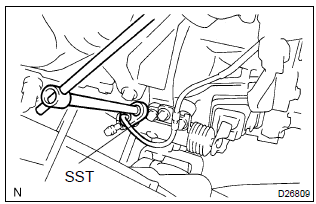
- Using sst, disconnect the flexible hose tube.
Sst 09023–00100
Hint
: use a container to catch the fluid.
3. Remove clutch release cylinder assy
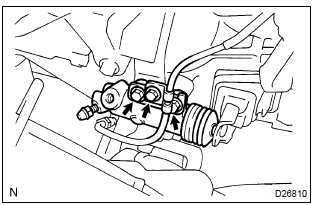
- Remove the 3 bolts, clutch release cylinder assy and clutch line bracket.
4. Remove clutch release cylinder kit
- remove the boot from the cylinder body.
- remove the push rod from the cylinder body.
- remove the piston from the cylinder body.
Notice
: be careful not to damage the inside of the cylinder body.
- remove the spring from the cylinder body.
- remove the bleeder plug cap from the bleeder plug.
5. Remove release cylinder bleeder plug
6. Install release cylinder bleeder plug
torque: 8.4 Nvm (85 Kgf·cm, 74 in.Vlbf)
7. Install clutch release cylinder kit
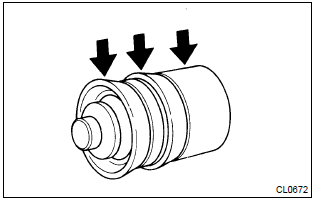
- Install the bleeder plug cap to the bleeder plug.
- install a new spring to the cylinder body.
- coat parts with lithium soap base glycol grease, as shown in the illustration.
- install the piston to the cylinder body.
Notice
: be careful not to damage the inside of the cylinder body.
- install the push rod to the cylinder body.
- install the boot to the cylinder body.
8. Install clutch release cylinder assy
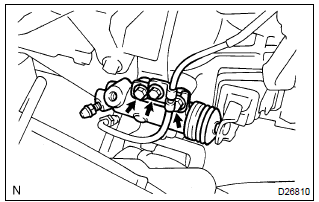
- Install the clutch release cylinder and clutch line bracket
with the 2 bolts.
Torque: 11.8 Nvm (120 Kgf·cm, 9 ft·lbf)
- install the flexible hose tube with the bolt.
Torque: 5.0 Nvm (51 Kgf·cm, 44 in.Vlbf)
9. Connect clutch release cylinder to flexible hose tube
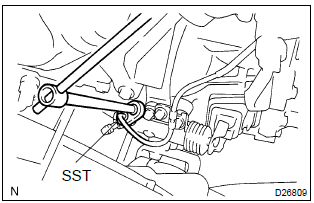
- Using sst, connect the flexible hose tube.
Sst 09023–00100
torque: 15.2 Nvm (155 Kgf·cm, 11 ft·lbf)
10. Bleed clutch pipe line
- fill the brake reservoir tank with brake fluid and bleed clutch
system.
Torque: 8.4 Nvm (85 Kgf·cm, 74 in.Vlbf)
11. Check clutch fluid leakage
Other materials:
Location of the storage features
Bottle holders/door pockets
Open trays (if equipped)
Glove box
Cup holders (if equipped)
Console box
WARNING
■Items that should not be left
in the storage spaces
Do not leave glasses,
spray cans in the storage spaces,
as this may cause the following
when cabin temperature becomes
high:
...
Diagnostic trouble code chart
If a dtc is displayed during the dtc check, check the circuit listed in the
table below and proceed to the
page given.
* :● ... Mil light up
...
Pre–check
1. Srs warning light check
Turn the ignition switch to the on position and check that
the srs warning light lights up.
check that the srs warning light goes out after approx.
6 Seconds.
Hint:
when the ignition switch is at on and the srs warning
light remains on or flashes, the ...


